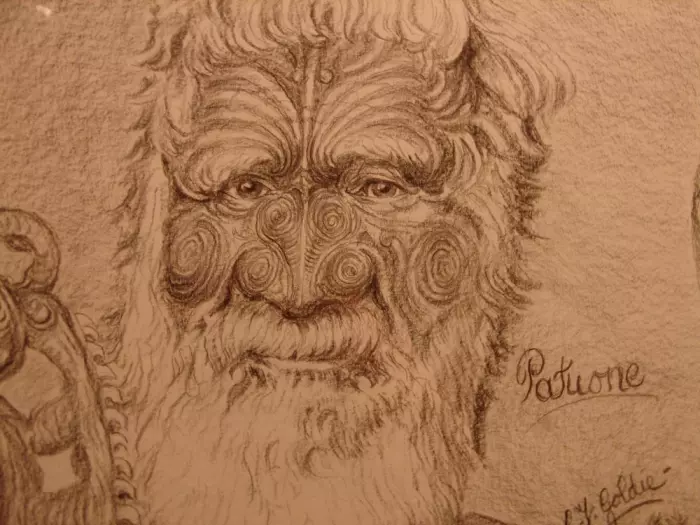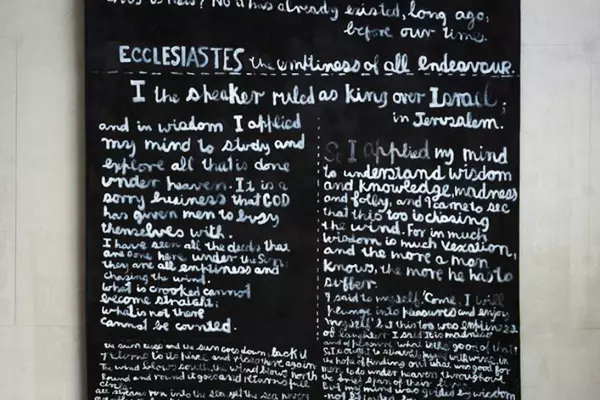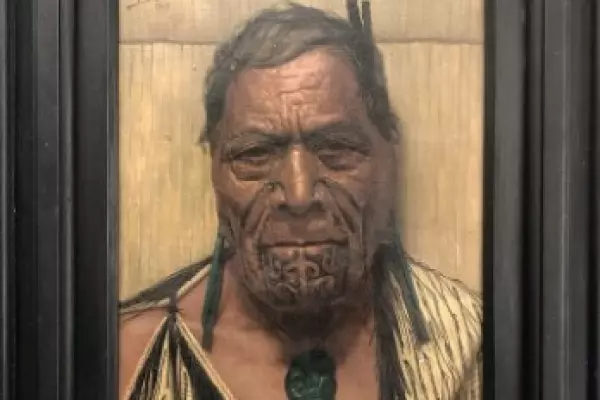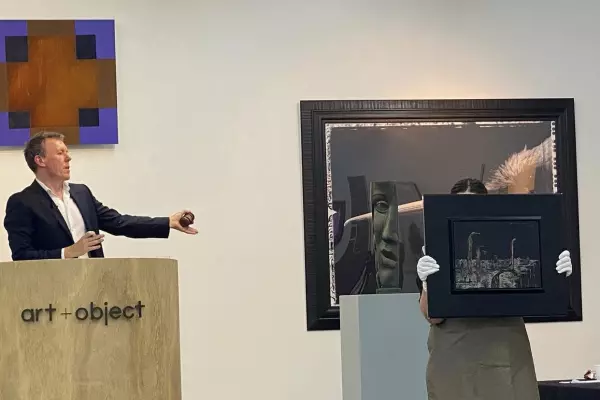Following the sixth annual Art Crime Symposium in Wellington, now seems a good time to reflect upon art crime in New Zealand and the types of fakes and forgeries that have appeared in the market here over the years.
Compared to other countries including Australia, New Zealand has had few major incidents of unscrupulous people producing forgeries with the intention of deceiving a buyer. Partly this is because our art market is so small, and also because many of the artists whose works could have been faked for reasonable sums of money were working in the second half of the 20th century, so their family members and artist colleagues are still around to offer their opinion on the authenticity of a questionable piece.
New Zealand’s best-known art forger was Karl Sim, who copied the work of CF Goldie (and many others such as Petrus van der Velden, Rita Angus and JC Hoyte) between the 1970s and the early 2000s, when the art market in New Zealand transitioned from a niche industry to having a more mainstream audience.
Sim had started showing artistic talent while a pupil at Palmerston North Technical College, where his teacher got him to copy other artists, including old masters and Goldie. Some time later, Sim noticed that his art-school efforts were being sold as originals. He started producing more such paintings and drawings, as well as creating slips of paper detailing “provenance” – the supposed history of the works – and forged receipts.
He found success selling these from his antique shop in Foxton and through associates who consigned them to auctions nationally.
The fraud grew, fuelled by an increase in the number of uneducated buyers entering the market in the 1970s and a rise in prices for Goldies. Sim was onto a lucrative money earner and fooled many industry professionals, including auction houses here and internationally. In 1980, even the National Art Gallery (now Te Papa Tongarewa) was taken in, buying a folio of 132 drawings supposedly by van der Velden.
Sim, who later changed his name to Carl Feodor Goldie so he could legally sign his pictures as CF Goldie, was found guilty of art fraud in 1986 – the only person in New Zealand to be convicted of this.
His forgeries are known to number in the thousands, involving copies of works by at least 50 artists.
Although auction houses won’t knowingly sell his paintings and are good at vetting works presented for appraisal, it is highly likely there are still examples of Sim’s art floating around New Zealand and Australia purporting to be by other artists.
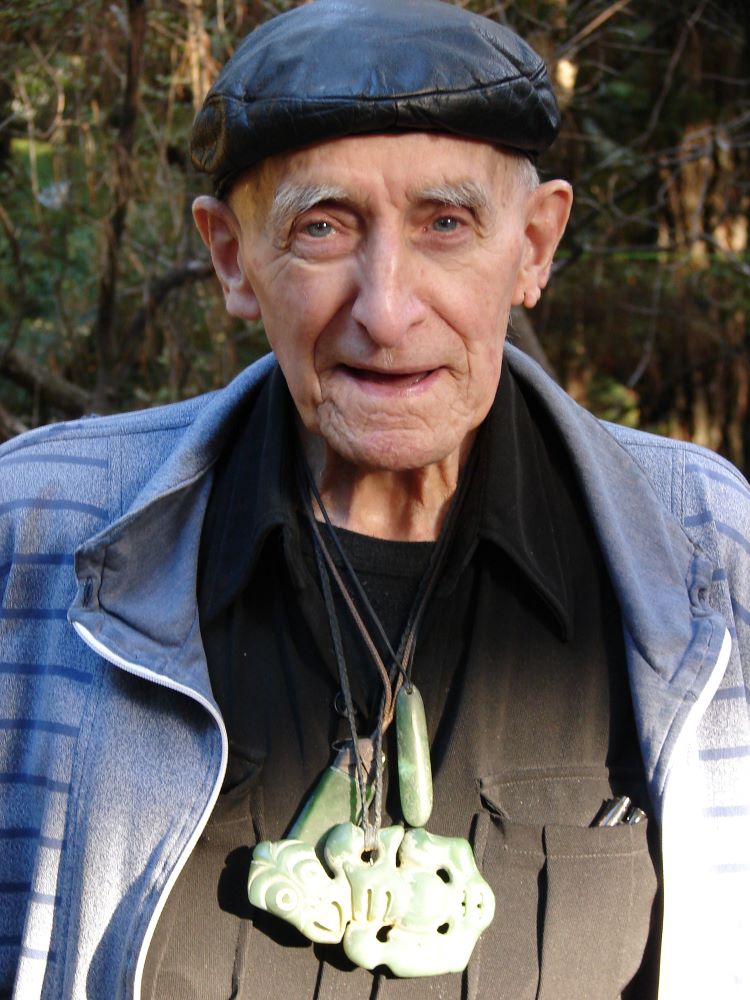 Karl Sim, aka Carl Feodor Goldie. Photo: Theresa Sjoquist.
Karl Sim, aka Carl Feodor Goldie. Photo: Theresa Sjoquist.
A more recent case shows how easily unsuspecting buyers can still be taken in by fakes. In 1987, celebrated Dunedin artist John Z Robinson produced a series of works on paper as a tribute to Colin McCahon. They are vaguely McCahonesque in appearance and show a black hill against a white background. One of these works was offered at Cordy’s Auctions in Auckland in June 2019, clearly signed as John Z Robinson, with a dedication to “Peter”. It had a pre-auction estimate of $2000, but failed to sell.
Fast forward to November 2020. The same painting appeared at Chiswick Auctions in London, supposedly as a signed work by McCahon. Someone had cut the bottom section off, and a new dedication read, “Colin McCahon to Peter, October 1971”. The work fetched the equivalent of $13,000. Luckily, eagle-eyed art aficionados in New Zealand spotted the fake and alerted Chiswick Auctions, which refunded the buyer.
A stunned Robinson told the Otago Daily Times the work was quite obviously not a McCahon, and the buyer should have done more homework. “Anyone who’s familiar with McCahon’s handwriting, of which there are so many examples, it’s clearly not his. And the fact that my painting, which is black and white over some brilliant colour … he never, ever did work like that.”
This doctored Robinson painting would not have got through the vetting process of a New Zealand auction house due to the level of scholarship and expertise here.
But New Zealand artworks do turn up overseas, and without the specialist knowledge and resources available to international auction houses, it can be easy for unscrupulous vendors to pass off fakes as the real thing.
There are a number of other ways fake artworks can enter the market. Through my work in auction houses in New Zealand and Australia, I have seen how easily pieces can be misidentified or wrongly attributed. A work that may have a passing resemblance to that of a more important artist but signed with initials only or with a partial signature could be misattributed.
Oftentimes, an artwork is brought in for auction appraisal by people who have always believed, or been told, that it is by a particular artist, especially if there was a family connection to the person in the past. Sometimes it can be difficult to be decisive about the authenticity of an artwork when the artist was prolific or was known to produce work of varying quality. In such instances, a fake could be assessed as just being a poor example of the artist’s efforts.
To avoid unknowingly purchasing a fake or forgery, it is important to do your due diligence. Provenance is important, the chain of ownership, records relating to previous exhibitions and other pertinent history all help to verify the authenticity of a work and should be listed or available for the buyer.
Major works by the likes of McCahon and Frances Hodgkins, for example, should be entered into the online database that records them; this means they have been verified by the foremost experts on the artists.
Comparing signatures and subject matter with other works by the artist you wish to purchase sounds like a basic step but there are paintings floating around that carry an artist’s signature but look nothing like their work.
Beware of online auction sites which rely on the vendor to provide the description of the goods. They can often be used to dispose of artworks that aren’t quite right, and if the price being asked seems too good to be true, it probably is.
Further reading:
Ian Dougherty, A Good Joke: The Life and Crimes of Notorious New Zealand Art Forger Karl Sim, Saddle Hill Press, 2019
Colin McCahon database: mccahon.co.nz
Frances Hodgkins database: completefranceshodgkins.com
Briar Williams is a fine art valuer at Art Valuations NZ.


